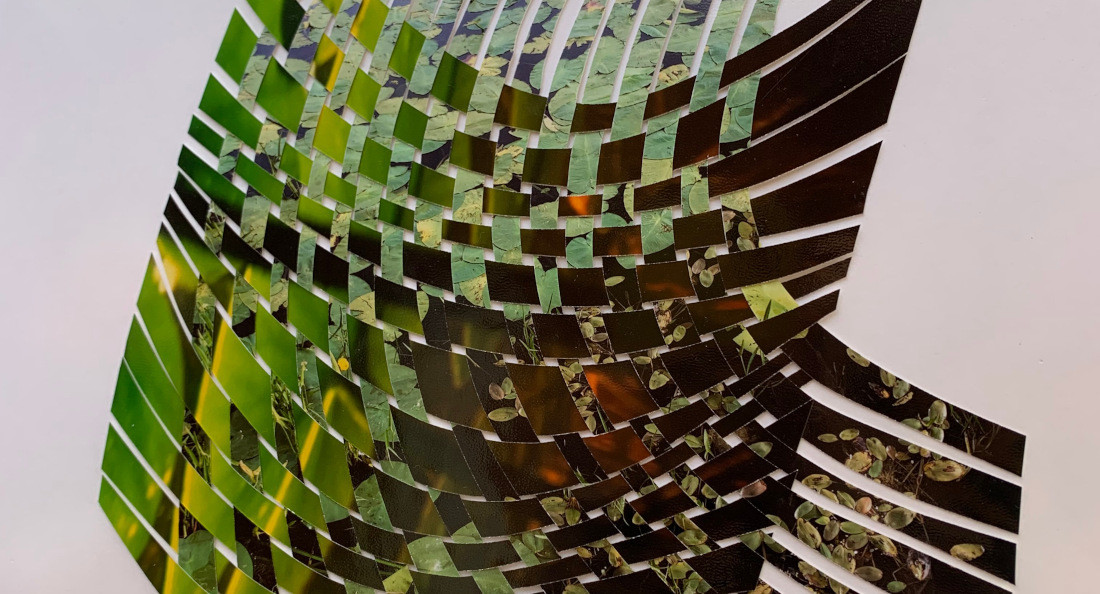A greener world is possible
Planet Love mobilizes art for climate action
From temperature maps displaying a sea of red to line graphs depicting exponential CO2 emissions, most of the visual language surrounding climate change evokes nihilism rather than hope.
Yet, in a new, multidisciplinary exhibition called Planet Love, hope is the basis for climate action.
From Sept. 8 to Nov. 19, the Galerie Buhler Gallery in St. Boniface Hospital’s atrium will become an artistic forum for climate action. In the little-known gallery, a group of local artists put forth a compelling argument for the role of art in imagining greener futures.
Hannah Godfrey, known by her alias hannah_g, curated the exhibition with the idea of using art to replace climate nihilism with hope. In her words, “there’s still a lot to fight for.”
Over the course of a year, Godfrey united 19 local artists across various disciplines under the umbrella of climate action.
“I was finding that I can engage with issues better if it’s from a place of inspiration and hope rather than a place of despair and anxiety,” she says. “I wanted to create an exhibition that filled people up with inspiration and good feelings. I think that’s more of a sustainable way to be able to deal with a really difficult situation.”
In a time of ecological destruction, climate anxiety has become a source of existential dread for many. Godfrey believes the role of the artist is to mobilize anxiety into action, presenting new connections and imagining alternative futures.
Artist Helga Jakobson is doing so by, quite literally, listening to the creatures beneath her feet. In her Planet Love piece, Jakobson created a musical score using spider webs.
“It’s a 16 x 20 shadow box with a real spider web inside of it. The spider web itself I recorded with a machine that I have built that plays spider webs as music,” she says. “It’s an array of phototransistors that read the light, so whatever shadows are created from the spider web onto the phototransistor array, that’s how it plays.”
Relating back to the exhibition’s broader themes, Jakobson believes working with organic material has changed her relationship with the creatures from passive to connected.
“I think that one of the best ways of creating some compassion and some movement and re-empowering people to find a way to create a better impact on this Earth is by allowing them to build a closer relationship,” she says. “For me, being able to listen to a spider web changes my relationship to spiders.”
In their work, participating artist AO Roberts combines sculpture, sound and text to propagate a discussion around climate action. Keeping accessibility in mind, they strived to incorporate multiple ways of engaging with and experiencing the art.
“All three (mediums) are kind of used in the same way to look at one idea but through different kinds of senses,” Roberts says.
The piece is an extension of a larger, futurist project Roberts has been developing called Plants, Properties, Equipment.
“That whole project looks at the healing properties of plants as a way to reimagine our medical and medicinal cosmologies,” they say. “So, thinking about our relationship to the planet, our relationship to our bodies and how we engage with plants and the planet in ways that can be more healing and more grounded.”
The exhibition is taking place in tandem with a program of climate-related events. Free bike tune-ups by the W.R.E.N.C.H, a climate-themed concert series by the Manitoba Chamber Orchestra, a native-plant identification walk and several guest talks are all on the menu for the next three months.
In October, Godfrey will host a weekly climate hope circle with St. Boniface Hospital staff and volunteers. In doing so, she hopes to transform climate anxiety into climate action.
“We also get a lot of patients, of course, and staff and volunteers who come to the gallery and have it as a place of recuperation,” Godfrey says. “There’s been a lot of positive engagement.”
For local artists, the climate crisis informs their creative output in both existential and material ways. Aside from anxieties about planetary destruction, ecological changes directly impact how Jakobson can incorporate elements of the natural world into her work.
“There are all kinds of very large-scale impacts, but, in a very real way, it impacts the work that I make, because I work with living material constantly,” she says. “The shift in seasons, the shift in temperatures all impact the work that I create.”
Roberts, whose art often meditates on disability justice, forms a connection between how society treats disabled people and the degradation of the planet.
“This very able-bodied, heteronormative worldview looks at the planet in the same way that it does disabled bodies, as either something to be discarded or exploited,” they say. “We are disabling the planet.”
Outside of research and policy developments surrounding climate change, artists can help others imagine a future in harmony with the natural world, Godfrey says. They can shift the doomsday-esque narratives to ones of hope and solidarity.
“The artists have a way of being able to tell stories and bring perspectives onto things which can be really empowering,” she says. “There are a lot of stories that are doomsday stories ... I just totally reject that. There’s still a lot of beauty, and there’s still a lot of life that can be saved.”
“If art and, simply put, love are entangled, life-saving things can happen.”
Planet Love is on at Gallerie Buhler Gallery (St. Boniface Hospital Atrium, 409 Tache Ave.) from now until Nov. 19. Walk-ins are welcome, but appointments are preferred. For gallery hours and appointment bookings, visit galeriebuhlergallery.ca.
Published in Volume 78, Number 03 of The Uniter (September 21, 2023)







